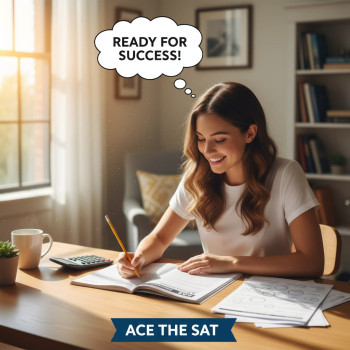Is the SAT accepted by the University of Sydney?
Short answer: yes — the University of Sydney accepts SAT scores from international applicants as one pathway to demonstrate academic readiness. But like many global universities, the way SAT scores are used can vary by faculty, program, and year. That means you’ll want to check specific entry requirements for your chosen degree, plan how to present your scores in the strongest light, and understand alternatives such as high school grades or other standardized tests.

How universities like Sydney use SAT scores
Universities use standardized test scores in a few different ways. For many international applicants the SAT can:
- Complement high school grades where conversion between systems is tricky.
- Demonstrate readiness in math and evidence-based reading/writing, especially if your school’s curriculum or grading is unfamiliar to the admissions office.
- Be used for scholarship consideration or course placement in some faculties.
At the University of Sydney, admissions staff look at an applicant’s complete profile: academic transcript, English language proficiency, personal statement (where required), and any test scores you submit. SAT scores can strengthen an application — especially for competitive degrees — but they rarely function as the sole criterion.
What SAT score should you aim for?
There’s no single “University of Sydney SAT cut-off” across all programs. Competitive faculties such as engineering, commerce, or health sciences will naturally expect stronger academic records and higher standardized-test performance than less competitive programs. A practical approach is to set tiered score goals that match your target faculty and personal competitiveness.
Suggested SAT target ranges (practical guidance)
Use these as ballpark targets to guide your preparation — higher is always safer for selective programs.
| Competitiveness Tier | Target SAT (Total) | Notes |
|---|---|---|
| Highly competitive (engineering, medicine-related pre-reqs, business/commerce) | 1400–1600 | Strive for 1500+ to feel broadly competitive; also focus on strong math subscores for technical degrees. |
| Moderately competitive (arts, social sciences with selective intakes) | 1250–1450 | Solid combined score plus balanced section scores works well. |
| Less competitive (some creative arts, vocational pathways) | 1000–1250 | Good to have evidence of fit via portfolio or audition where required. |
Remember: a strong SAT math section is especially valuable for STEM and commerce applicants. If your SAT total is below your target, consider whether other parts of your application (personal statement, portfolio, grades) can compensate.
How to submit SAT scores to the University of Sydney
Sending your official SAT scores is a step you should plan for. The process typically involves:
- Registering for the Digital SAT on the College Board website and testing on a date that allows time for score reporting before the application deadline.
- Requesting official score reports to be sent to the University of Sydney using their institution code when you register or via your College Board account after testing.
- Confirming with the University of Sydney admissions office how they prefer scores to be provided and whether a self-reported score is acceptable initially.
Timing matters: the digital SAT can release scores on different timelines, and you’ll want your official scores to arrive with your application or by any stated deadline for international qualifications. If in doubt, submit your application with the rest of your documents and follow up with official score reports as soon as they’re available.
Practical timeline example
Here’s a sample timeline for students applying for a January or February intake (common for southern-hemisphere universities) or for applicants to northern-hemisphere cohorts:
- 6–9 months before application deadline: start structured SAT prep and pick tentative test dates.
- 3 months before application deadline: sit a full-length practice test under timed conditions; adjust study plan.
- 6–8 weeks before application deadline: sit the SAT so official scores can be sent before deadlines; if retesting, plan a second sitting earlier enough for scores to be reported.
- At application submission: either include self-reported SAT scores (if allowed) and note that official scores will follow, or have official reports already delivered from College Board.
Common questions parents and students ask
Do all applicants need to submit SAT scores?
No. The University of Sydney accepts various credential pathways. Many international applicants use SATs, IB, A-levels, or equivalent country-based qualifications. SAT scores are optional for some pathways but can strengthen an application, particularly when translating grades across different systems.
Does the University of Sydney translate SAT scores into an equivalent percentage or rank?
Admissions officers use assessment tables and experience to interpret international qualifications. SATs are one part of the evidence portfolio they consider — there isn’t a single, publicly posted formula that converts a specific SAT into a guaranteed equivalent percentage. Present the strongest, cohesive academic record you can.
Will SAT scores help with scholarships?
Yes — for many international scholarships and merit-based awards, strong standardized-test scores can make a significant difference. Even when a scholarship’s criteria emphasize grades or leadership, high SAT results give evaluators additional confidence in your academic preparedness.
Study strategies that actually work for the Digital SAT
The Digital SAT is different in format and timing from the old paper test. While the skills tested remain similar — problem-solving, reasoning, and clear writing and reading comprehension — the test pace, question presentation, and on-screen tools require practice. Here are evidence-backed strategies:
- Practice in a digital format. Simulate the test environment by using online, timed practice tests so you’re comfortable with navigation, on-screen calculators, and the digital interface.
- Target weaker areas with short, focused sessions. If your practice tests show a recurring weakness (e.g., data interpretation, command of evidence), devote 20–40 minute focused blocks to drills on that topic.
- Use official practice material. Official College Board/Khan Academy resources mirror the style and difficulty of the test and are the best way to calibrate your expectations.
- Refine test-day strategy. Learn how to triage questions quickly — tackle the straightforward ones first, flag time-consuming items, and leave only a few minutes at the end to revisit flagged questions.
How Sparkl’s personalized tutoring can help (fit it naturally)
Many students benefit from a tailored approach: one-on-one guidance that focuses on weaknesses, creates a realistic practice schedule, and uses AI-driven insights to track progress. Sparkl’s personalized tutoring offers that combination — expert tutors, a tailored study plan, and data-informed adjustments — which helps students spend less time guessing what to study and more time improving the specific skills that raise scores. For busy families, that targeted efficiency can mean the difference between a marginal score and the strong, competitive result needed for top programs.
Sample study plan: 12-week roadmap
This plan assumes a baseline of some familiarity with SAT content. If you’re starting from scratch, extend this to 16–20 weeks.
| Weeks | Focus | Weekly Activities | Goal |
|---|---|---|---|
| 1–2 | Baseline & fundamentals | Full-length diagnostic digital SAT; content review in weakest sections (math or EBRW) | Identify target score and weaknesses |
| 3–6 | Skill building | 4–6 practice sessions/week (mixed sections); daily vocab/reading; weekly math problem sets | +80–120 point improvement |
| 7–9 | Timed practice & strategy | 2 full timed digital tests; strategy refinement (time management, question triage) | Consistent pacing and fewer careless errors |
| 10–12 | Polish & test readiness | Full tests every 7–10 days; light content review; focus on sleep, nutrition, logistics | Peak performance on test day |
Application tips that make SAT scores stand out
- Contextualize: If your school uses a different grading system, use the application to explain curricular rigor (APs, IB courses, advanced classes) so admissions officers can interpret your SAT alongside grades.
- Balance your portfolio: For creative programs, combine a good SAT with a strong portfolio or audition materials; for STEM, pair SAT math excellence with evidence of project experience or math competitions.
- Send scores early: Whenever possible, send official scores before application deadlines or at least note in your application that official reports are forthcoming.
- Highlight improvement: If you retake the SAT and show clear upward trends, write a brief note in your application about your focused preparation and growth — it demonstrates maturity and dedication.
Real-world examples and comparisons
Imagine two applicants to a competitive commerce program. Applicant A has strong school grades from a system that’s difficult to interpret internationally, and a single SAT sitting with an excellent math score but a mediocre reading section. Applicant B has similar grades but no standardized test. Admissions officers often prefer Applicant A because the SAT math provides a clear, comparable data point that supports readiness for quantitative coursework — especially if Applicant A’s reading score is acceptable or if the rest of the application shows strong communication skills.
That’s why carefully chosen standardized testing, when paired with a rounded application, can be a practical advantage rather than an unnecessary stressor.
Special considerations for parents
Parents play a vital role as emotional support, logistics managers, and sometimes study partners. Practical ways you can help include:
- Helping schedule test dates and ensuring travel plans allow for calm, rested mornings on test day.
- Encouraging consistent study routines rather than last-minute cramming — steady progress beats panic.
- Providing balanced nutrition and sleep support around test weeks. Cognitive performance is closely tied to rest and diet.
- Exploring targeted help. A few months of focused tutoring (one-on-one) can be more effective than many hours of unstructured study. Services like Sparkl deliver individualized plans and expert tutors who can pinpoint and fix the exact gaps that are dragging scores down.
What if you don’t have SAT scores or choose not to submit them?
That’s fine — many applicants use other credentials. If you opt not to submit SAT scores, make sure other parts of the application are strong:
- High school transcript showing rigorous courses and strong grades.
- Clear personal statement or supplemental essays that communicate fit and motivation.
- Letters of recommendation (where required) that speak to your academic potential.
- Additional evidence like portfolios, interviews, or course-specific tests if applicable.
When SATs are optional, consider whether your score will strengthen your case — if yes, submit it. If your score is well below your other indicators, it might be better to rely on stronger evidence.
Final checklist before you hit submit
- Confirm the University of Sydney faculty-specific entry requirements for your program (subject prerequisites, English language minimums, additional documents).
- Verify the correct institution code and delivery method for official SAT score reports with College Board.
- Make sure your SAT score is sent and processed before any scholarship or admission deadlines.
- Review your whole application for coherence: do your grades, test scores (if submitted), essays, and extracurriculars tell the same story about who you are and why you fit the program?
Conclusion: Make the SAT work for your University of Sydney application
The SAT can be a valuable asset for international applicants to the University of Sydney — especially when it clarifies strengths that aren’t obvious from transcripts alone. Approach it strategically: set realistic score targets for your chosen faculty, practice on the digital format, and consider targeted 1-on-1 help if you need efficient, measurable improvement. With thoughtful preparation, helpful support, and careful timing, your SAT score can be the clear, comparable evidence that helps you stand out in a globally competitive admissions process.

Need help getting there?
If you want a tailored plan and focused practice, targeted tutoring that mixes human coaching and data-driven insights can speed progress. Personalized tutoring — like Sparkl’s 1-on-1 guidance, tailored study plans, expert tutors, and AI-driven insights — helps many families by converting hours of unfocused study into measurable score improvements, while also building confidence for interviews and essays.
Good luck — plan early, practice smart, and make the parts of your application work together. The University of Sydney is looking for students who are prepared, curious, and ready to contribute — and with the right SAT strategy, you can show them exactly that.

















No Comments
Leave a comment Cancel